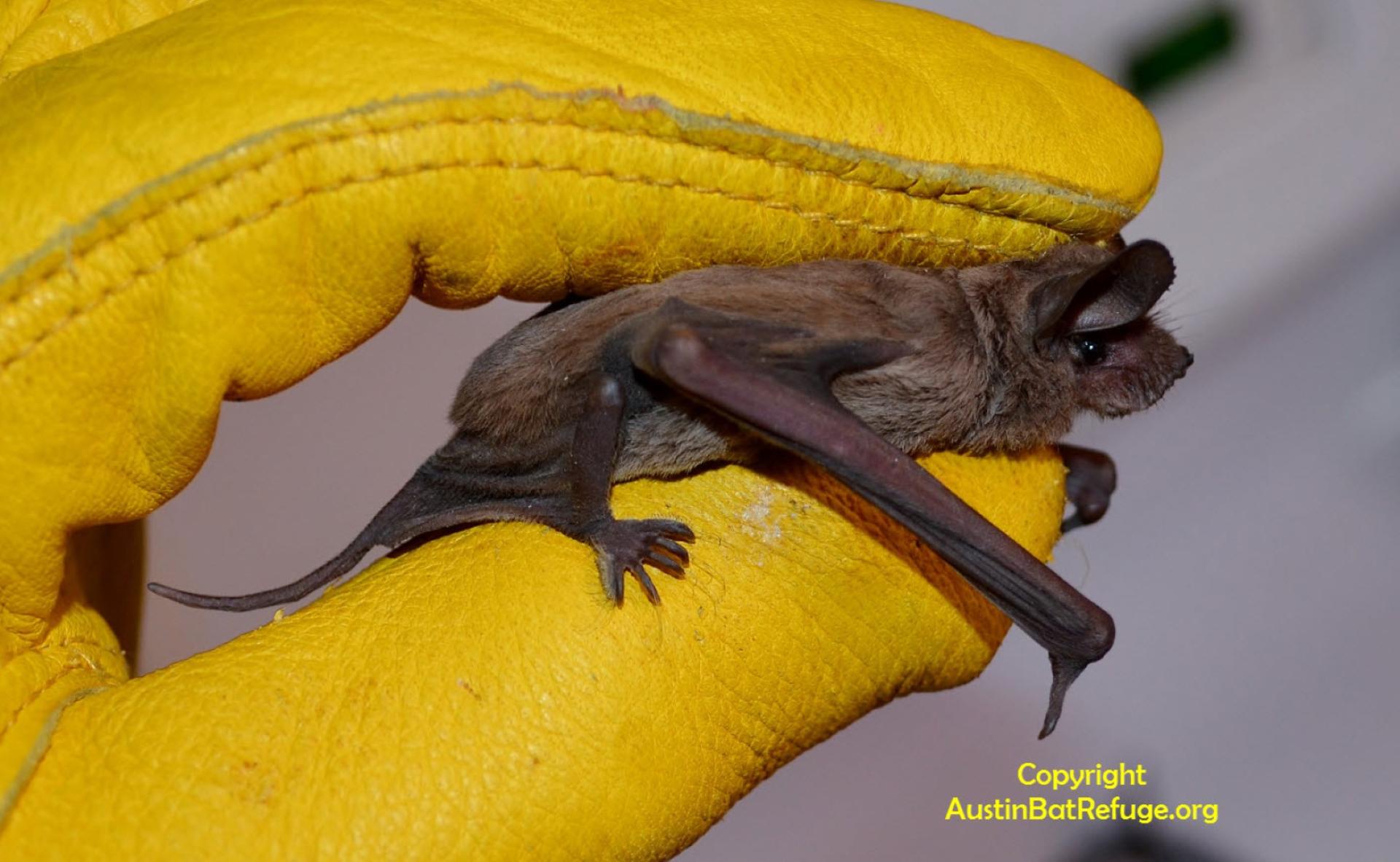You are here
Be A Better Gardener: What's Best for Bats?
Be A Better Gardener: What's Best for Bats?
by Thomas Christopher
I often used to see little brown bats swooping over my yard. Known scientifically as Myositis lucifugus, this animal is well named, for “lucifugus” is Latin for “shunning daylight,” which is appropriate for an animal that appears only in the evening as it flies around hunting insects. The common name is also apt, for this bat is very small — it measures less than four inches long and weighs less than half an ounce. During the day, these creatures roosted in the crack under a sliding barn door. Where they hibernated I do not know — likely in one of the rocky crevices in the surrounding glacial landscape.
I almost never see bats anymore though. A fungal disease called “white nose syndrome” that was first observed in New York state in 2006 spread rapidly through the Northeast and much of the United States and Canada. It kills bats during hibernation and has proven deadly to a dozen species of North American bats. It has reduced the little brown bats, once common throughout most of the continental United States and southern Canada, to the status of an endangered species. Pennsylvania reported a loss of 98-99% of its little brown bats in just a decade.
Who cares, you may be thinking. I know that most people fear bats. There are all the old superstitions and a more rational contemporary concern that they may carry rabies which they can transmit through a bite. To put that into perspective, however, such a scenario results on average in one death per year, whereas car collisions with deer kill roughly 200 people annually.
I find bats, with their ability to navigate and hunt by echolocation, fascinating. Besides, the crash of the little brown bat population has had a very real impact on our gardens. An individual bat of this species catches and eats its own body weight in insects every night, helping significantly to control pests of vegetables, flowers, and farm crops. According to Penn State University, a colony of 100 little brown bats may consume more than a quarter of a million mosquitoes and other small insects each night.
The good news is that some wildlife scientists have been recently reporting a small rebound of little brown bat populations, at least locally. To find out if there is any way that gardeners can contribute to this, I contacted Lee Mackenzie, the co-founder of the Austin Bat Refuge in Austin, Texas. For the last 8 years, Mackenzie and his co-founder and wife Dianne Odegard have been rescuing, nurturing and healing orphaned and injured bats in an open-air “bat garden,” a netting-enclosed aviary. This is not regarded as strange behavior in Austin, where the 1.5 million Mexican free-tail bats that emerge every evening from under a city highway bridge have become the city’s most popular tourist attraction and where September brings the annual Bat Fest.
Lee shared with me some insights about how to make your landscape hospitable to bats. Plant night-blooming plants, he advised, to attract moths, which are a favorite food for bats. I’ve grown in the past both flowering tobacco (Nicotiana alata) and moonflower vines (Ipomoea alba), and I can recommend both for their perfume and the ghostly beauty of their white flowers. They are both annuals and easily started from seed.
Evening primrose (Oenothera biennis), a biennial and a native of the Northeast, is another good choice. Its yellow blossoms open in the evening and last all night, filling the air with a lemon scent. A perennial relative from the Southwest that is winter hardy through USDA zone 4 is the pink evening primrose, which bears bowl-shaped blossoms 2-3 inches in diameter that open white but turn pink as they age.
Another way to make your landscape hospitable to bats is to install a shallow drinking trough 2.5 feet wide and 10 feet long with a 7-foot clear “swoop zone” at either end. This construction need not be elaborate – a plastic-lined trench a couple of inches deep will serve. A bird bath won’t work as a substitute as bats drink on the wing, scooping up a sip as they fly by.
Installing a bat-focused corner in your garden will not only support a unique form of wildlife, it will also provide a free show in a sweet-scented spot where you can enjoy a moment of respite in the evening.
For more information about bats and bat gardening, listen to the Berkshire Botanical Garden’s “Growing Greener” podcast at www.berkshirebotanical.org.
Be-a-Better-Gardener is a community service of Berkshire Botanical Garden, located in Stockbridge, Mass. Its mission, to provide knowledge of gardening and the environment through a diverse range of classes and programs, informs and inspires thousands of students and visitors each year. Thomas Christopher is a volunteer at Berkshire Botanical Garden and is the author or co-author of more than a dozen books, including Nature into Art and The Gardens of Wave Hill (Timber Press, 2019). He is the 2021 Garden Club of America's National Medalist for Literature, a distinction reserved to recognize those who have left a profound and lasting impact on issues that are most important to the GCA. Christopher’s companion broadcast to this column, Growing Greener, streams on WESUFM.org, Pacifica Radio and NPR and is available at berkshirebotanical.org/growinggreener.
Help Our Garden Grow!
Your donation helps us to educate and inspire visitors of all ages on the art and science of gardening and the preservation of our environment.
All Donations are 100 percent tax deductible.


